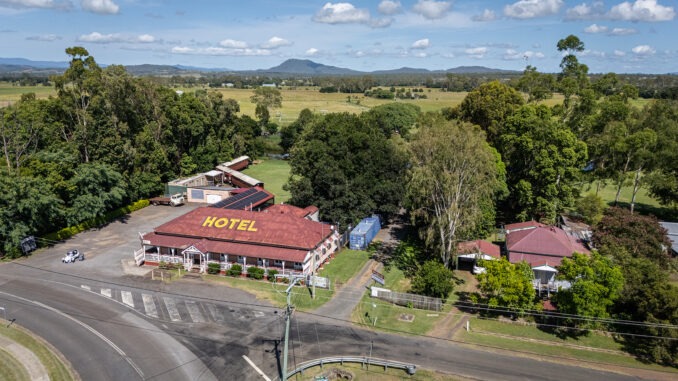
Harrisville is a rural village and locality in the Scenic Rim Region, Queensland.
In 1839, a survey of the areas then known as Normanby Plains (which now forms part of Harrisville), together with Wilsons Plains and Radford to the south was completed.
This area formed part of the old Mount Flinders sheep station established by William Wilson (and his brother Robert) around 1844, soon after the Moreton Bay penal colony closed.
Some of the land from this station became available to selectors in December 1860 with provision of the Ipswich Agricultural Reserve. In 1863 Robert Dunn selected a portion from this Reserve from which the Harris brothers purchased their land in1870.
The town is believed to be named after the Harris brothers: John Harris (1819–1895) and George Harris (1831–1891). They established a store and cotton ginnery in the area. Cotton was a valuable crop at that time as the American Civil War had created a worldwide shortage.
The first State School opened in the area in 1867.
A Wesleyan Methodist church was opened near Harrisville in 1871,
The Harrisville Post Office opened in 1873.
The Fassifern railway line (Queensland’s first branch railway line) opened from Ipswich to Harrisville in 1882 with the town being served by Harrisville railway station in Queen Street. In1887 the line was extended to Dugundan, it closed in 1964.
The population today is about 700 people. The village also has some beautiful heritage listed buildings including.
Heritage Listed Buildings Include
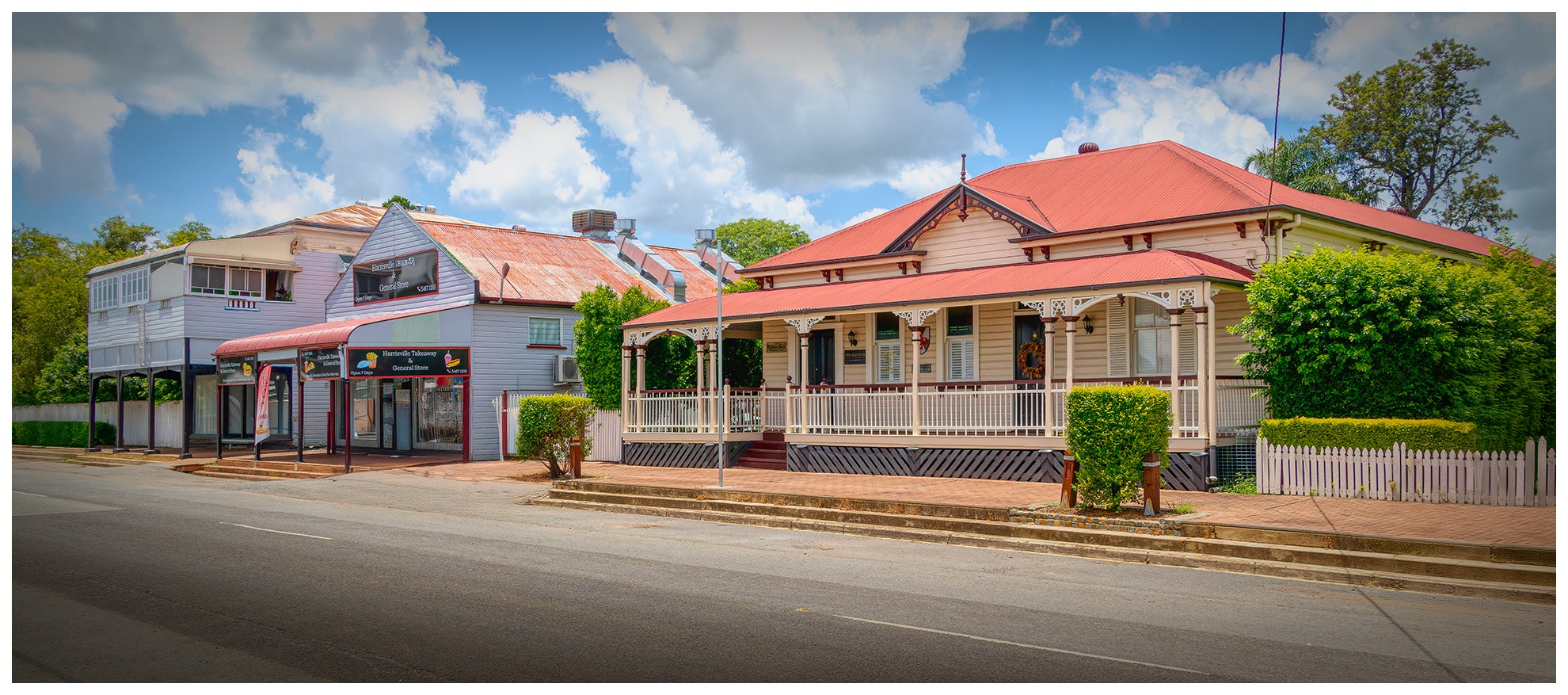
1. Former Royal Bank opened in 1905 as the Royal Bank of Queensland and successively operated as The Bank of Qld Ltd (1917-22), the National Bank of Australasia (1922 onwards). Since it closed as a bank, it has been used as a residence and antique shop.
2. Masonic Hall, the first lodge meeting of the Freemasons was held in the Harrisville School of Arts in May 1894. It was known as Fassifern Kilwinning No. 808.
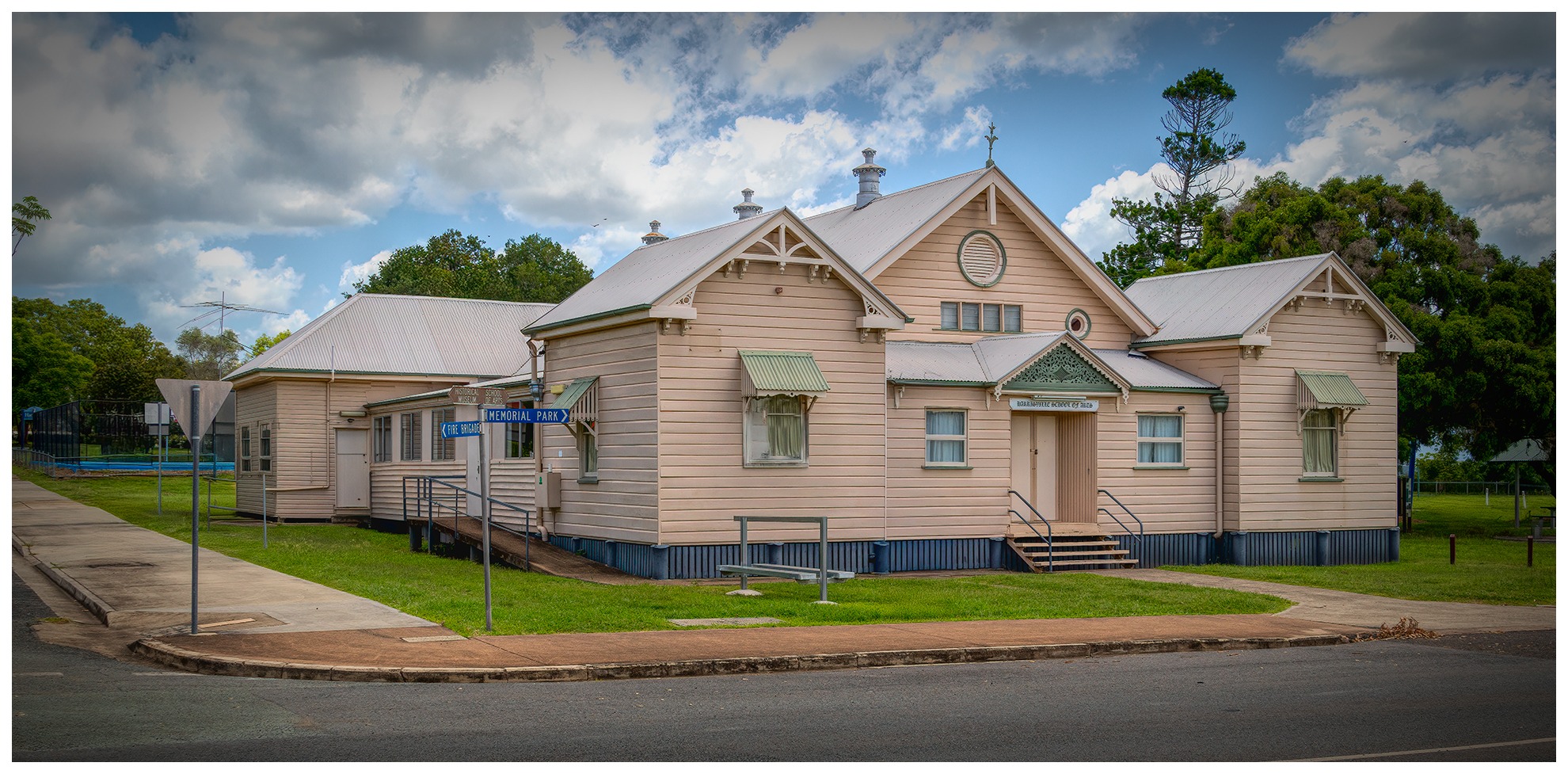
3. School of Arts, 5 Hall Street, The school of Arts started in 1889, using rented premises. The trustees bought land in February 1891 and one of the trustees, Robert Dunn, is said to have advanced the money to allow building to begin. The first part constructed was the central portion. In 1893, the committee asked for a stage licence and the building was described as “a wooden building with an iron roof, hardwood frame and pine walls, 50ft long and 28ft wide. It is furnished with forms and chairs. There would be seating accommodation for about 200 people.”
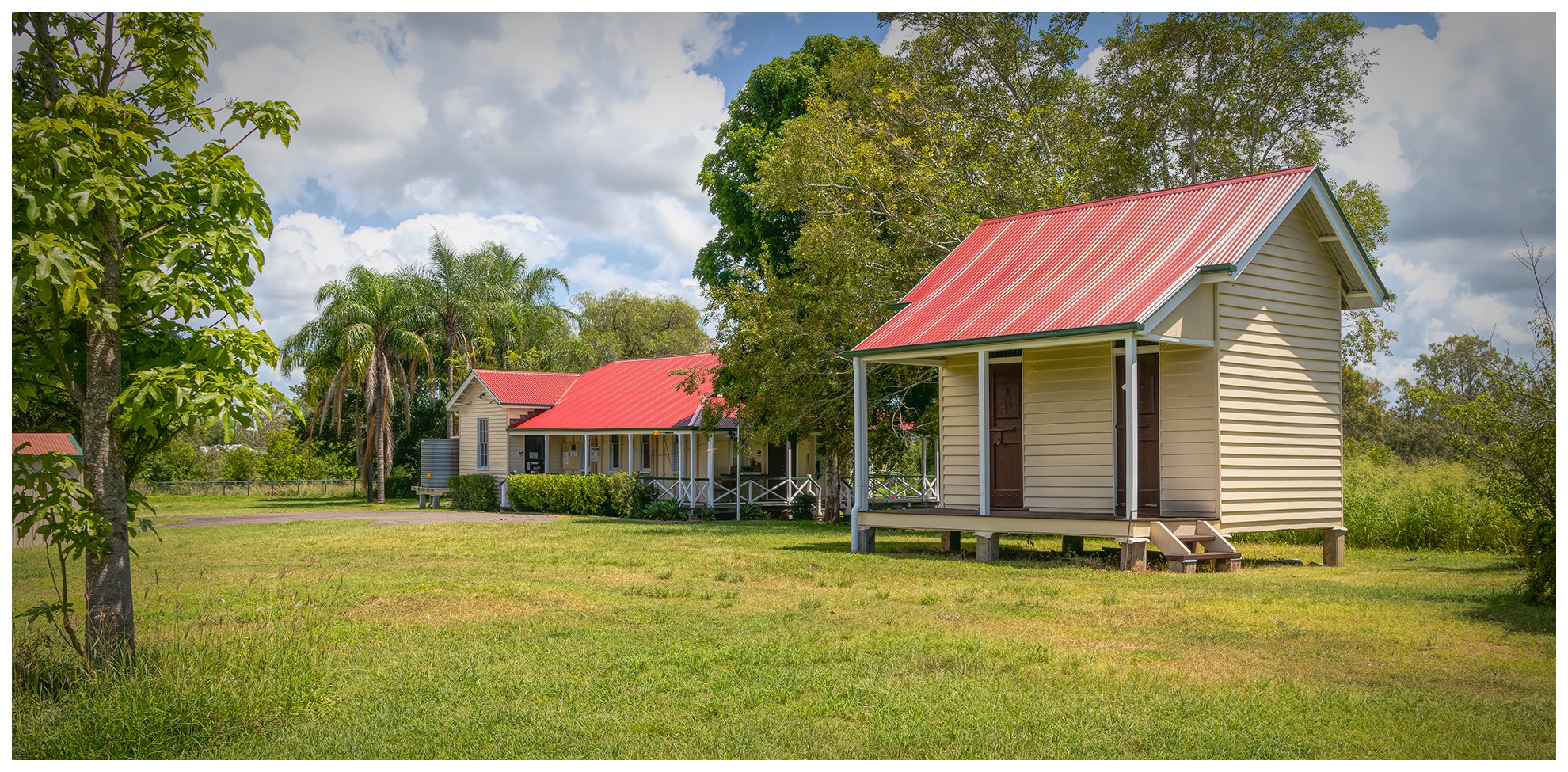
4. Courthouse and Police Lock-up, the police station began operating in 1871 as a reserve station of the Ipswich district with Sgt William Carson as the first policeman. It officially became Harrisville Police Station in 1872. The lockup was built in 1896.
5. Commercial Hotel, 34 Queen Street, A licence was granted to Ellen Butler in 1901. The original hotel burned down in 1939 and the present two-storey building was constructed later the same year.
6. Memorial Park, brick and concrete war memorial, Harrisville Memorial Park and Gates honours the fallen of World War I. In June 1922, the Harrisville District Welfare Committee and Returned Soldiers League amalgamated and pooled their funds amounting to 200 pounds for the purpose of erecting a suitable war memorial for the shire. A property in the heart of town was purchased for the purpose of a park.
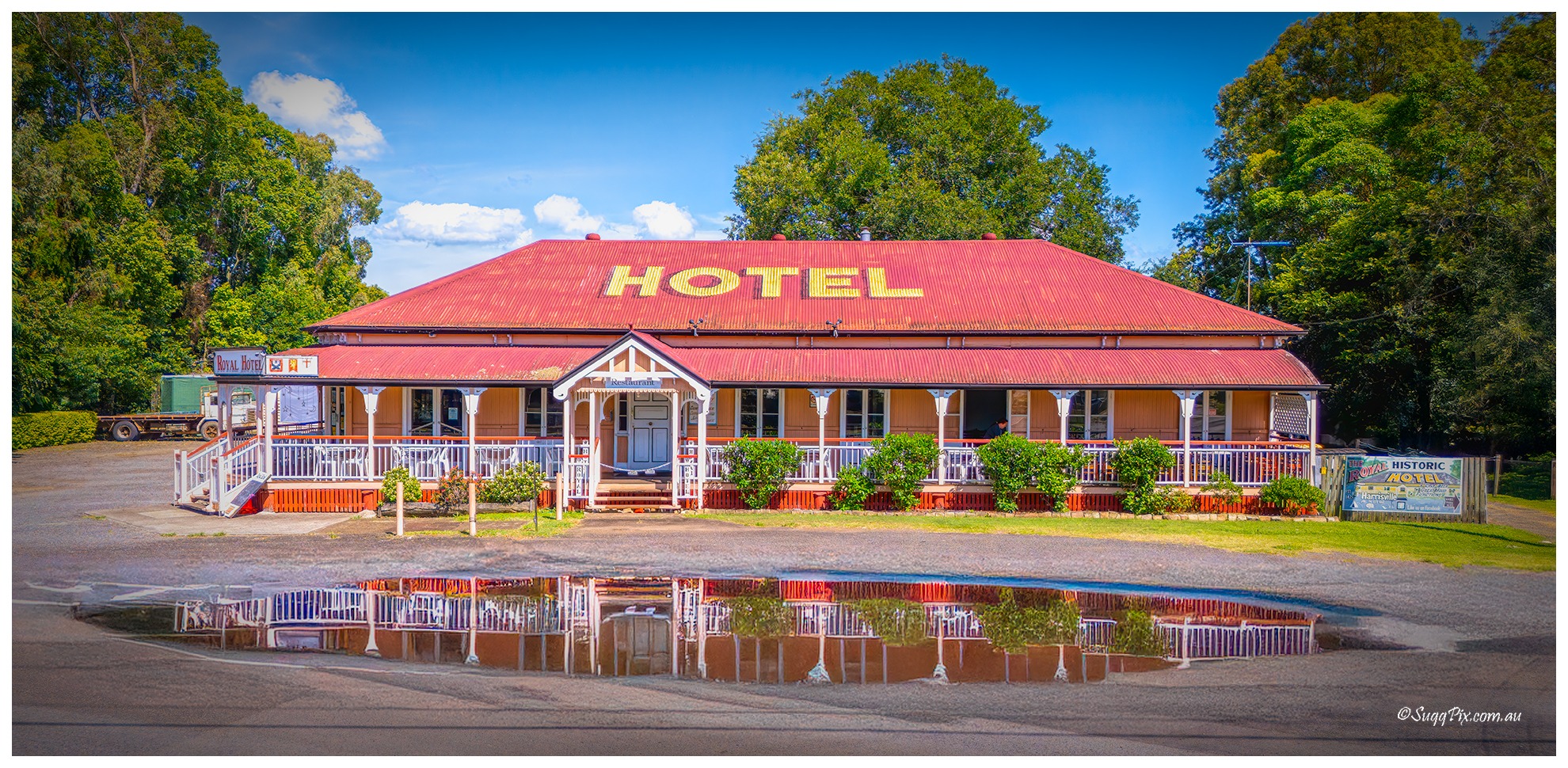
7. The Harrisville Royal Hotel has local historical significance as it provides evidence of the commercial development of Harrisville from the early twentieth century. The building is representative of a single storey timber hotel from the Inter-War period and embodies aesthetic features that are valued by the community such as the timber verandah and original fenestration. The hotel has social significance as a popular social venue for the Harrisville community for over a century and is a fine example of a country hotel. It first opened in 1875 and was rebuilt following a fire in 1920.
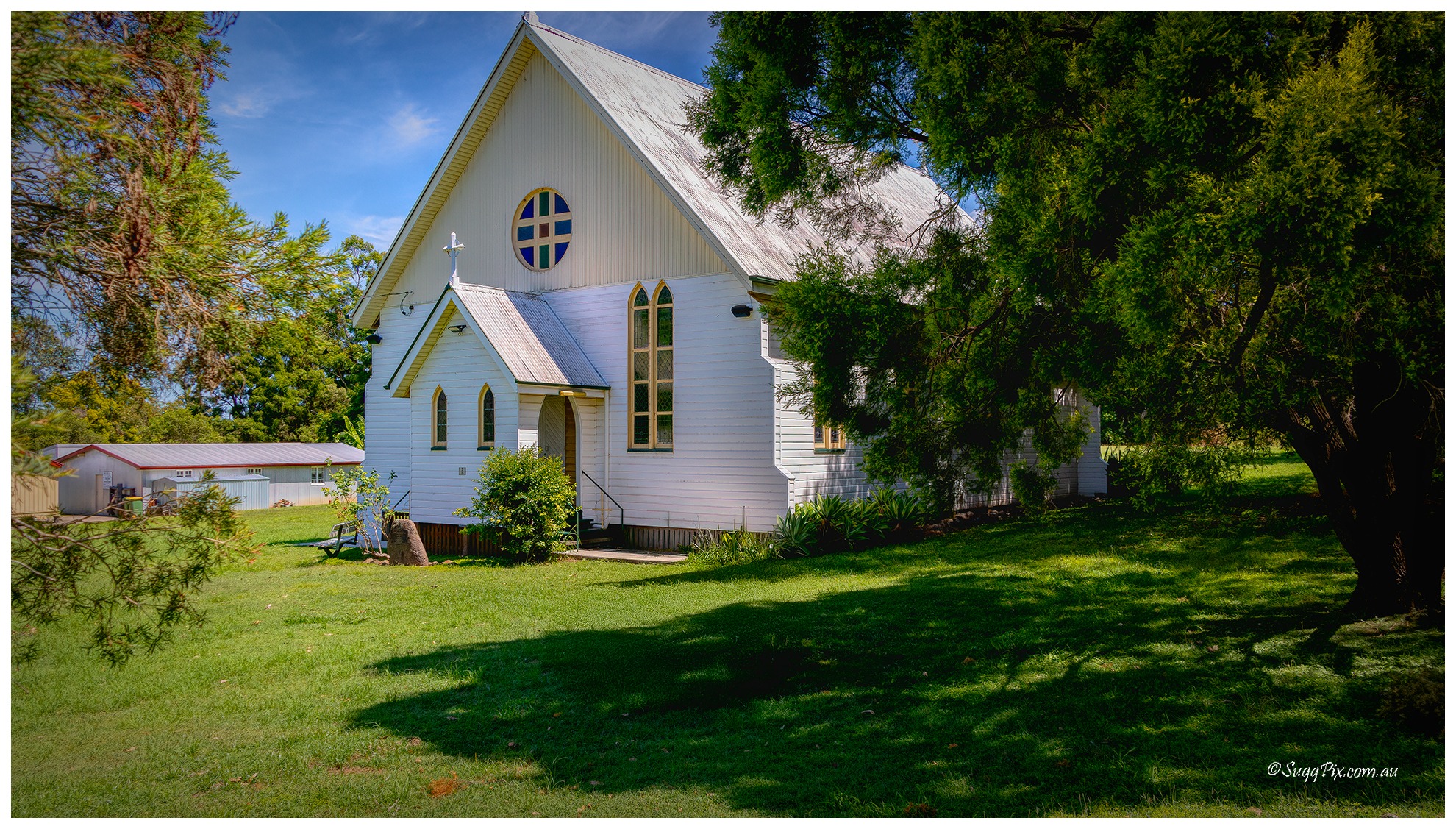
8. Sacred Heart Catholic Church, Mass was first celebrated in Harrisville in 1873 in a local hotel. The present church was opened 1909 and at one time, was regarded as “one of the prettiest country churches in the Archdiocese”. A plaque at the front indicates that the church was renovated in 1987.


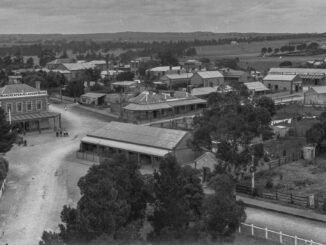
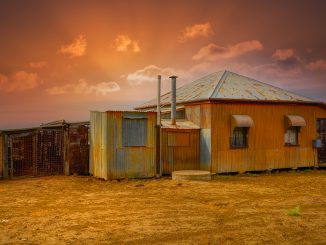
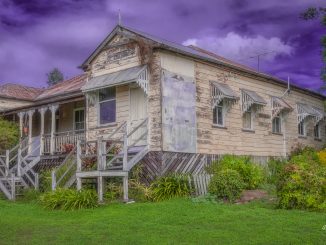
What a beautiful little village. In the first photo, is that ‘overhang’ on the second floor an add-on or was it on the original building? Any remnants of the cotton gin left?
Hi Henry, I am sure it was the original veranda that was enclosed, a long time ago. I will be going back for another visit in a couple of weeks and your question re the cotton gin is my my list. I am going to be shown the interiors of some of the heritage buildings.